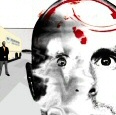 The New Yorker has an engaging article about psychopaths and what psychologists are starting to learn about the psychology and neuroscience of people who are thought to lack empathy.
The New Yorker has an engaging article about psychopaths and what psychologists are starting to learn about the psychology and neuroscience of people who are thought to lack empathy.
Psychopathy doesn’t necessarily imply violence. The most commonly used modern definition, based on the work of psychologist Robert Hare, suggests that psychopathy includes things like a lack of conscience, manipulative behaviour, impulsiveness and an anti-social lifestyle.
The condition was first described clinically in 1801, by the French surgeon Philippe Pinel. He called it ‘mania without delirium.’ In the early nineteenth century, the American surgeon Benjamin Rush wrote about a type of ‘moral derangement’ in which the sufferer was neither delusional nor psychotic but nevertheless engaged in profoundly antisocial behavior, including horrifying acts of violence. Rush noted that the condition appeared early in life. The term ‘moral insanity‘ became popular in the mid-nineteenth century, and was widely used in the U.S. and in England to describe incorrigible criminals. The word ‘psychopath’ (literally, ‘suffering soul’) was coined in Germany in the eighteen-eighties. By the nineteen-twenties, ‘constitutional psychopathic inferiority,’ had become the catchall phrase psychiatrists used for a general mixture of violent and antisocial characteristics found in irredeemable criminals, who appeared to lack a conscience.
In the late nineteen-thirties, an American psychiatrist named Hervey Cleckley began collecting data on a certain kind of patient he encountered in the course of his work in a psychiatric hospital in Augusta, Georgia. These people were from varied social and family backgrounds. Some were poor, but others were sons of Augusta‚Äôs most prosperous and respected families. Cleckley set about sharpening the vague construct of constitutional psychopathic inferiority, and distinguishing it from other forms of mental illness. He eventually isolated sixteen traits exhibited by patients he called ‘primary’ psychopaths; these included being charming and intelligent, unreliable, dishonest, irresponsible, self-centered, emotionally shallow, and lacking in empathy and insight.
However, the article focuses on the work of psychologist Kent Kiehl who has completed a great deal of recent brain imaging research on criminal psychopaths, and argues that the core problem is a dysfunction of the paralimbic system.
This includes areas such as the orbital frontal cortex, anterior cingulate and amygdala, that are known to be involved in emotional reactions and often thought to be involved particularly in social interaction and empathy.
However, as the article recounts, getting inmates at maximum security prisons involved in cognitive science research has its own special challenges. Although this seem to have been somewhat mitigated by Kiehl’s use of a portable fMRI machine.
To be honest, the article focuses a little too much on the personalities, particularly when the science is so interesting, but it does cover the bases well and does make for an engaging read.
Link to New Yorker article ‘Suffering Souls’.
Benjamin Rush are you freaking kidding me?
You cite Rush as an authority on Psychopathy?
Do you not know of the Rush chair
Do you not know he tortured his patients into “sanity”?
“Rush regarded his policies as humane and “mild.” In fact, they were brutal: “Lying, as a vice, is said to be incurable. The same thing may be said of it as a disease […] Its only remedy is, bodily pain, inflicted by the rod, or confinement, or abstinence from food.” For good measure, he added: “Terror acts powerfully upon the body, through the medium of the mind, and should be employed in the cure of madness.” Rush went so far as to invent a new “therapeutic” device — actually, an instrument of terror and torture — which he presciently called the “tranquilizing chair.”
In addition, it began with “benevolent tortures,” such as frightening them by throwing them into a pit of snakes, the origin of the term “snake pit” for insane asylum. More specifically, the humoral imbalance theory led Rush to employ “bleeding, purging, low diet, and the tranquilizing chair. “The tranquilizing chair was a chair-like contraption for confining the patient and rotating him until he became dizzy or lost consciousness. This was supposed to rebalance the circulation in the brain. It was but a small step from the nineteenth-century’s tranquilizing chair to the twentieth century’s tranquilizing drug, supposed to rebalance the chemical imbalance in the patient’s brain.”
This is a genuine question, not one intended to start a debate.
The things Mark(p.s.) says about Benjamin Rush are truly horrifying, yet do his cruel treatment practices negate his observations?
Peace,
Piper Wilson
The brain findings make sense but they don’t answer the chicken or egg question. Is psychopathy the result of malfunctioning brains, or does psychopathic behavior, or other factors such as childhood trauma, shrink these emotional areas?